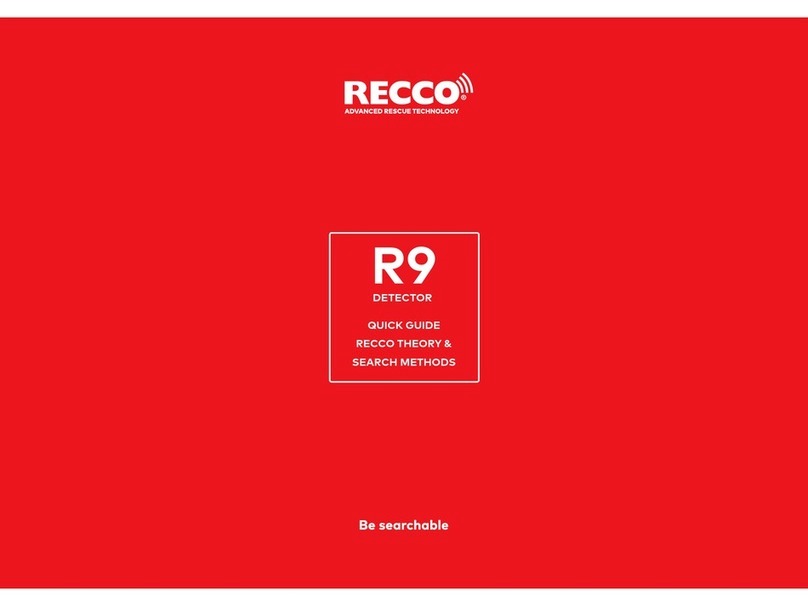6
Batteries should be checked on a
regular basis according to the de-
tector check form.
Additional batteries can be
purchased from RECCO AB.
▸ Charging time: 2 hours
▸ Operating time: 2 hours
▸ Battery life: 5 years / 400 charging cycles
▸ Battery warning: Short beep = change/recharge battery immedi-
ately
2. RECCO R9 DEDECTOR
The R9 Detector uses a lithi-
um-ion battery pack which provi-
des fade free power for its entire
run time. This means power from
the battery will drop from full
to zero once the full charge has
been drained. An audible warning
alerts the operator when battery
needs to be recharged.
After every use, plug the R9 De-
tector back onto its charger. To
restart the charging process, flip
the RECCO On – Off switch from
off to on for about 1 to 2 seconds
and then back to off. This ensures
the battery accepts a maximum
charge.
Charging Status
Red LED light indicates charging
mode.
Green LED light indicates charg-
ing complete.
2.1 BATTERIES
2.2 CHARGING




























